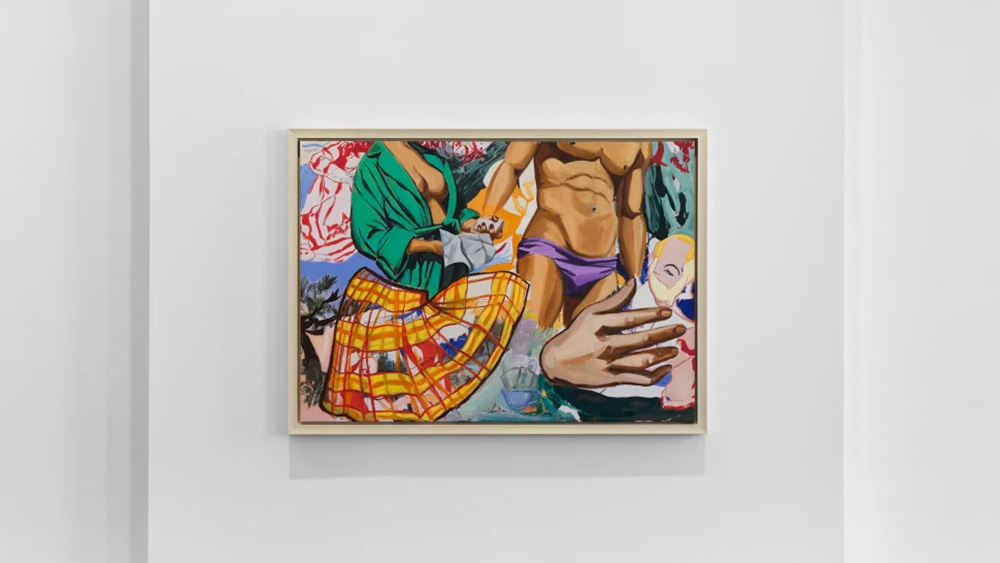How to draw a head: A complete guide
These insider tips will teach you the complex art of how to draw a head.
How to draw a head
Drawing a realistic head isn't easy, but this guide from Olivier Sin will help you to master the art. Read on...
15 tips for drawing heads realistically
This workshop will take you through all aspects of my drawing method. I'll reveal my key composition techniques, which range from establishing a point of view to applying key illustration principles for creating an accurate and expressive likeness of the human head.
You'll also learn how to apply what I consider to be the essentials of human facial anatomy, and explore how the concepts of value, shapes and plane changes affect a portrait's underlying structure. Elsewhere in this article I'll reveal my techniques for creating depth and dimension, and investigate how contrasting shapes are used to enhance depth in an illustration.
If your figure drawings are looking a little flat, then fear not – I'll also be covering how to create the illusion of three dimensions when drawing on a flat surface. I'll examine how edges – contours as well as changes in value – are used to convey three- dimensional form. And it's important to remember that not all portraits have to work in isolation. In this article I'll also be demonstrating how expressive hands, facial hair and the right choice of background can all enhance the finished piece, and make for a more pleasing viewing experience. So grab that charcoal stick and let's start drawing!
01. Use line expressively

I drew these portraits with expressive lines by using only the tip of the the vine charcoal, without blending with the flat side. I use lines depict the form of the head. It's been said that a line is a moving dot, or a point in motion. A line can guide a viewer's eye by defining edges and outlining shapes. Lines used to outline a shape are called contour or contour lines. The five types of lines are vertical lines, horizontal lines, diagonal lines, zig-zag lines and curved lines.
02. Consider your shapes

A shape is a closed contour, created when a line is enclosed, or when the ends of a line meet. All shapes are two-dimensional – they have both length and width. There are two types of shapes: geometric and organic. Geometric shapes include circles, triangles and squares. Organic shapes are those irregular, uneven shapes that seem to follow no rules; these expressive shapes are typically not man- made. I use mostly geometric shapes to depict a contour lines head drawings.
03. Understand shapes
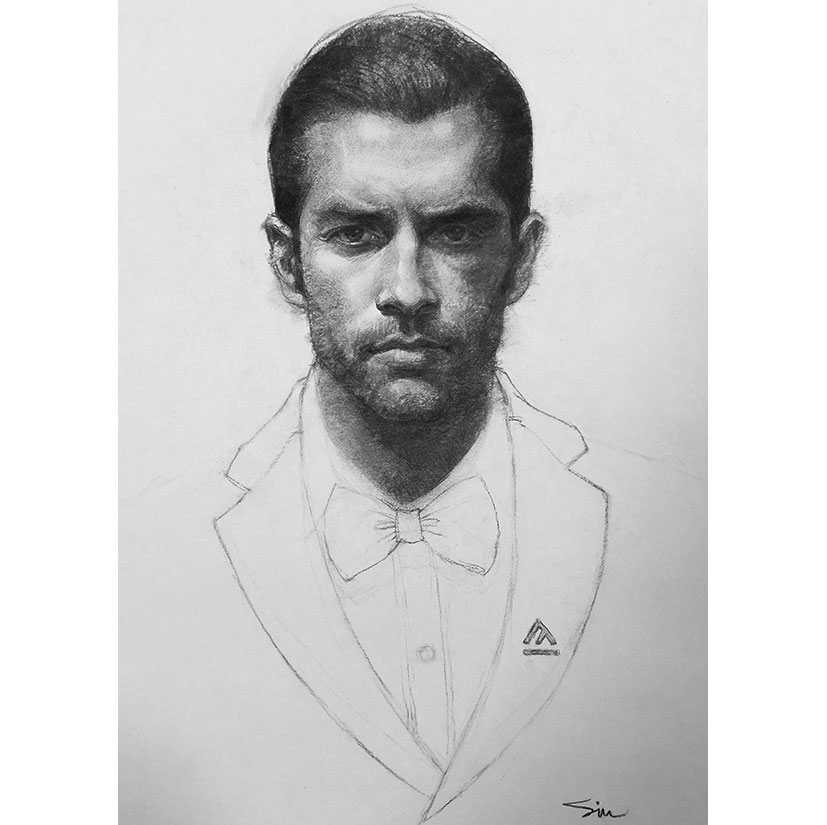
Form and shape are related. I think of forms as three-dimensional shapes. In art, the term form refers to an object that has length, width and height. I encourage you to develop your understanding of form, and how to create the illusion of form in head drawings, by studying the effect of light on objects. I prefer top lighting, which highlights the top-facing planes and casts extreme shadows. It's best to use a single light source to light the head for portraiture.
04. Know the power of values
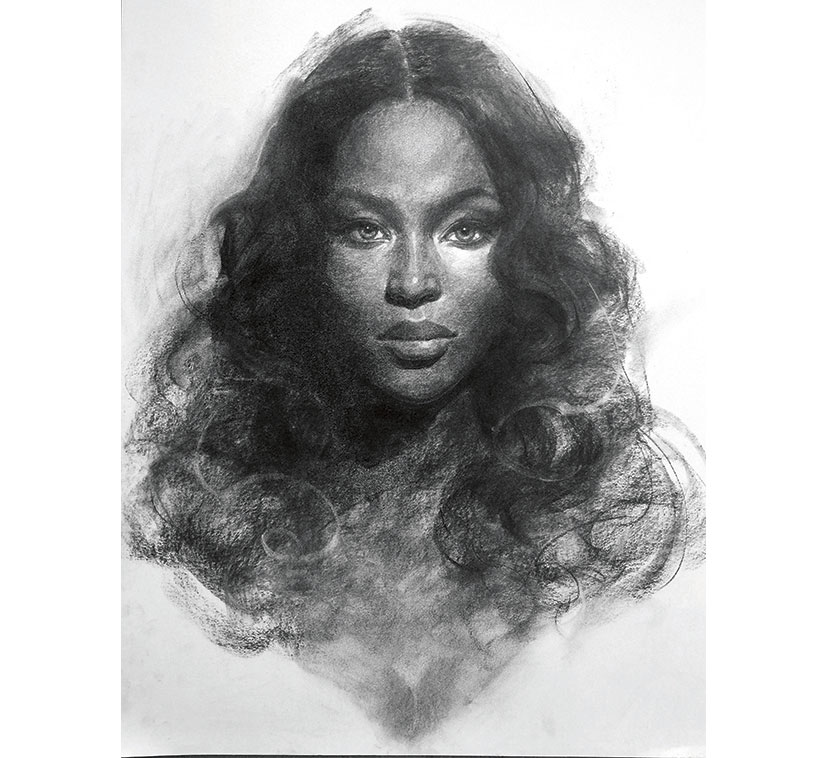
Value refers to the lightness or darkness of a tone. Value is crucial in a drawing because light and dark values describe the form of an object. All objects have a highlight, light, mid- tone, core shadow and reflected light, and I often apply this five-value system to my portrait drawings. Value is the key to the illusion of light, and a realistic drawing depends on a range of values. When drawing portraits, light and shadow translate from simple planes and shapes into detailed variations of value and line.
05. Apply a five-value system to your portrait
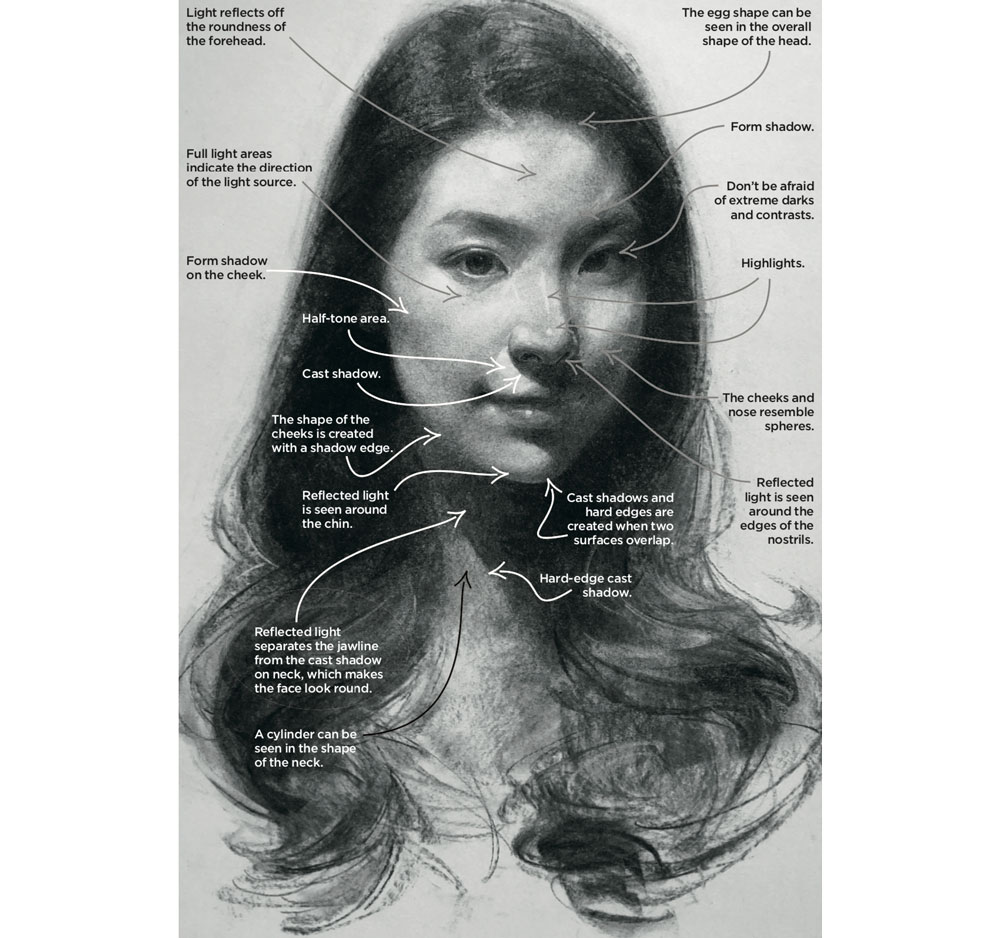
Geometric shapes can be found throughout the face: an egg shape for the head; spheres in facial features such as the cheek and nose; and a cylinder for the neck. Light reflects off the roundness of the forehead.
Don't be afraid of extreme darks and contrasts. Reflected light can be seen around the edges of the nostrils. Cast shadows and hard edges are created when two surfaces overlap. There's a hard edge on a cast shadow of the neck in this example. A form shadow is created on an object as its surface turns away from the light source, and it has soft edges. A cast shadow is created when light is blocked from an object. It has hard edges, with an abrupt change from light to dark.
06. Combine line and value

Line and value work together to create a likeness of the model. Value refers to the lightness or darkness of a colour or tone. Drawing areas of value alone ensures an artist becomes more aware of masses, forms and light. Drawing lines encourages the artist to study, judge and plan before drawing. The knowledge gained from line-drawing helps the artist make decisions about the edges of each area of tone as they develop the values. When drawing portraits, light and shadow translate from simple planes and shapes into detailed variations of value and line.
07. Apply value contrast
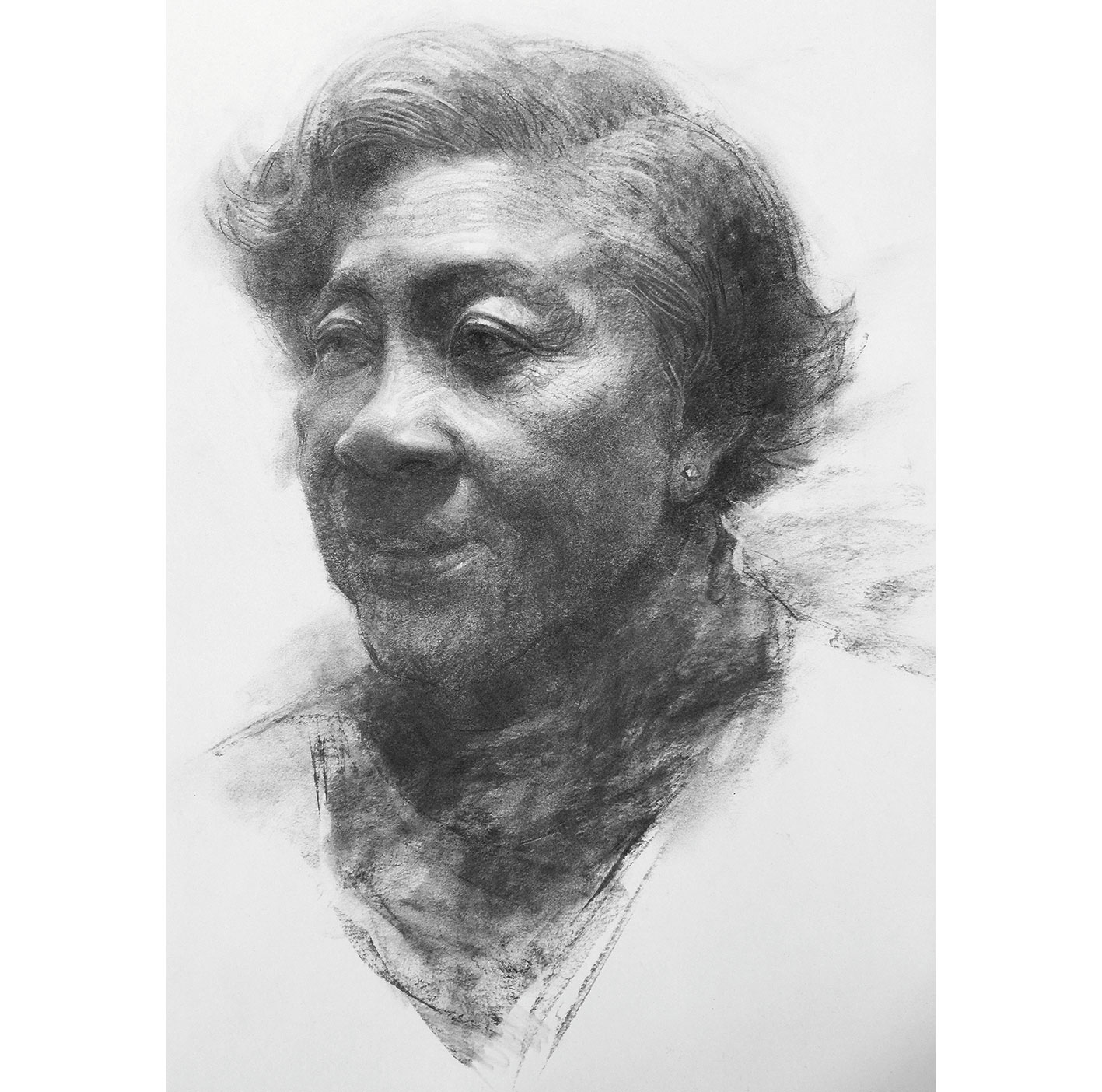
Value contrast is the best way to create the illusion of depth. Areas with a lot of contrast will come forward; areas with little contrast will recede. In this piece, as the scarf wraps around the neck I pushed it back visually by lowering the contrast, using similar values within it and drawing a thin line to suggest an edge. It becomes less visible as it recedes, instead of outlining its shape which would give it its own separate value.
I applied the same approach at the crown of the head by gradually lightening the value of the hair so it recedes into the background. Reducing value contrast at the perimeters of the face draws the eye to its centre, where I used high contrast between the left eye socket and the forehead.
08. Use foreshortening when in three-quarter view
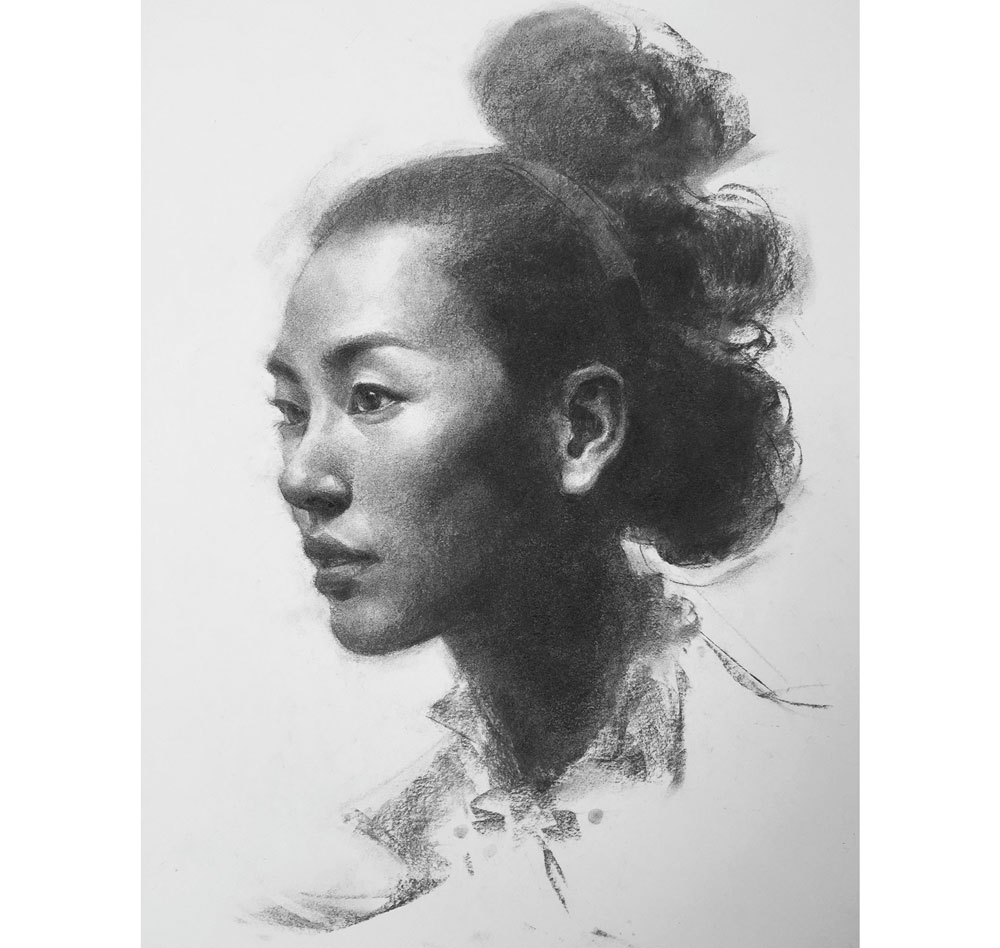
When the head is viewed at three-quarter angle, the perspective of the facial features are skewed. Foreshortening causes the closest parts of an object to appear larger than those farther away. Study proportion variation and measure the distance between features. Three-quarter
view places the emphasis on the closest eye as the focal point. The eyes and eyebrows reveal the mood of your subject – they can show emotion and personality. The near side of the face is wider than the far side because of foreshortened perspective. The cheekbone is more defined on the far side of the face, with a harder contour line.
Want to know more about foreshortening? See our guide to foreshortening in art.
09. Consider the difference between head drawing vs portrait drawing

There's a difference between head drawing and portrait drawing. Head drawing focuses on shapes, plane changes, anatomy, form and the perspective of the head. Portrait drawing is an artist's representation of a person's spirit: their expression, likeness, personality and mood. The “form” of the head refers only to the external appearance of the face.
To draw spirited portraits, you must consider what message – or perception – a portrait will communicate. The artist's personal perception is the common denominator of every work of art he or she creates. Each artwork reflects the unique perspective of the artist, no matter the style or subject. I would say that a good drawing features something that comes from within the artist.
10. Recognise the effect of contrapposto on the head and neck

The position of the head and the neck establish the attitude of the portrait and hints at the emotion of the model. Besides the angle of the head, look for the stretch and compression in the neck that reinforces the gesture. The word contrapposto describes the twisting action of the torso. When a figure twists the torso, does the neck.
Train your mind to recognise contrapposto and its effect on the neck. I often ask models to thrust the head forward and upward, and the stretch of the model's neck expresses a haughty gracefulness. One of my favourite poses has the model, with a dreamy look in their eyes, looking at the viewer over their shoulder.
11. How to draw an expressive portrait
a). Draw the shapes
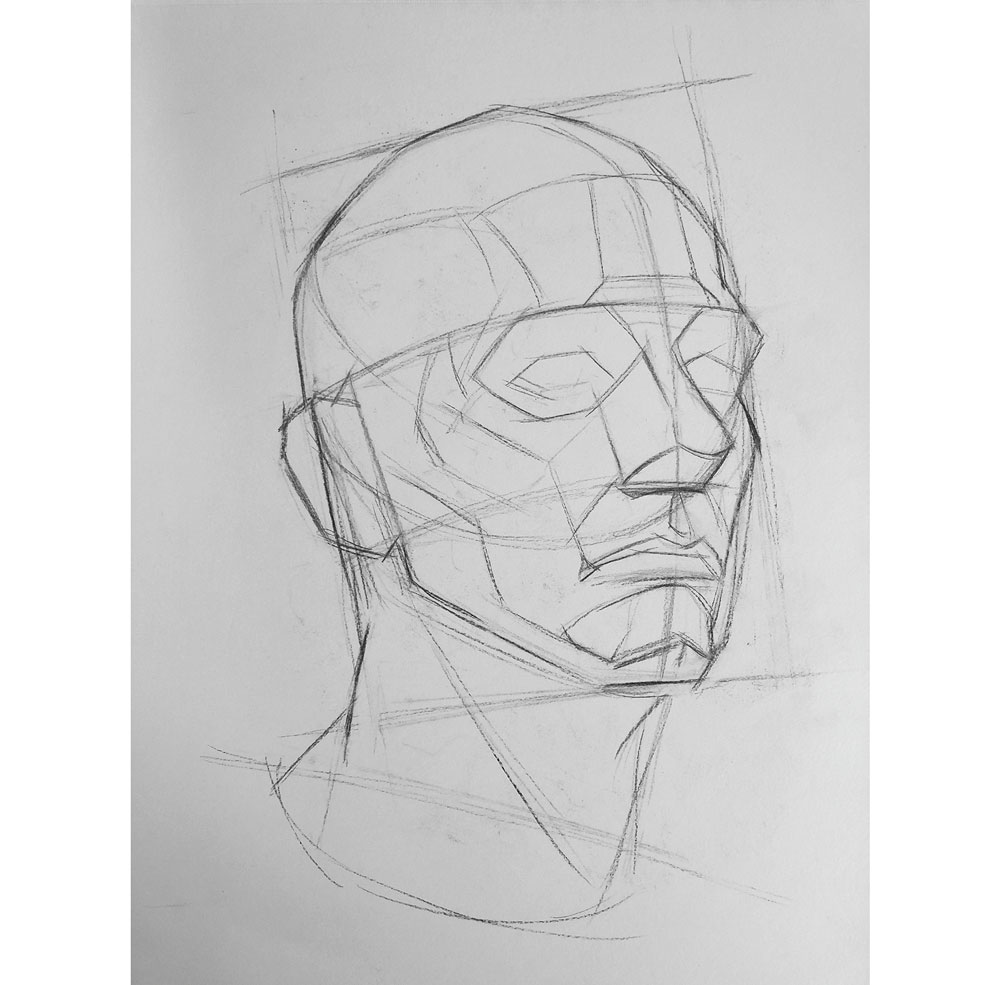
Use vine charcoal to map the position of the head by marking the top, bottom and side boundaries with straight lines. Straight lines enable you to observe the subject as a whole and examine the relationships between key blocks so you can define them accurately on paper.
Draw a ball shape for the skull and a U-shape for the jaw. Establish the cross where the middle line of the face crosses the eyebrow line. Identify and divide the head into thirds: one- third from the hairline to the eyebrows, one-third from the eyebrows to the nose, and one- third from the nose to the chin. The lower lip is halfway between the nose and the chin. Avoid specific details – just map out the head's general proportions.
Continue to use straight lines to define the large shadow areas, such as the eye sockets. I'd draw the eye sockets shapes first, then the base of the nose shape before the mouth shapes. Define the approximate shapes of the head's outline and mark the eyebrow. Notice the shape of the chin's bottom plane, which is foreshortened because of the angle of the head.
b). Define planes

Continue to define the shape of the ear, which aligns with the brow line and the bottom of the nose. Define the planes of the forehead, cheekbones, nose and chin with straight lines. Study the proportions and relationships of the shapes to one another. Avoid adding details such as the pupils and nostrils for now.
Use lines to define areas of shadow and where planes meet, such as the front, sides and slope of the forehead, and the front, wings and base of the nose. Mark the shapes and positions of the brow arch, cheekbones, temporal bones, chin and jaw. Treat this drawing as a blueprint. Use the broad side of the vine charcoal to begin blocking in values to build the structure of the head. Remember that all objects have light, middle, and dark values when exposed to light. Hatch the shadow areas of the head, such as the eye sockets, and continue into the dark shadow of the cheekbone and other shadow areas. Train your eyes to unify the shadow areas, while avoid seeing individual facial details. You could reduce the textures by blending the surface with your fingertips or a stump.
c). Start detailing
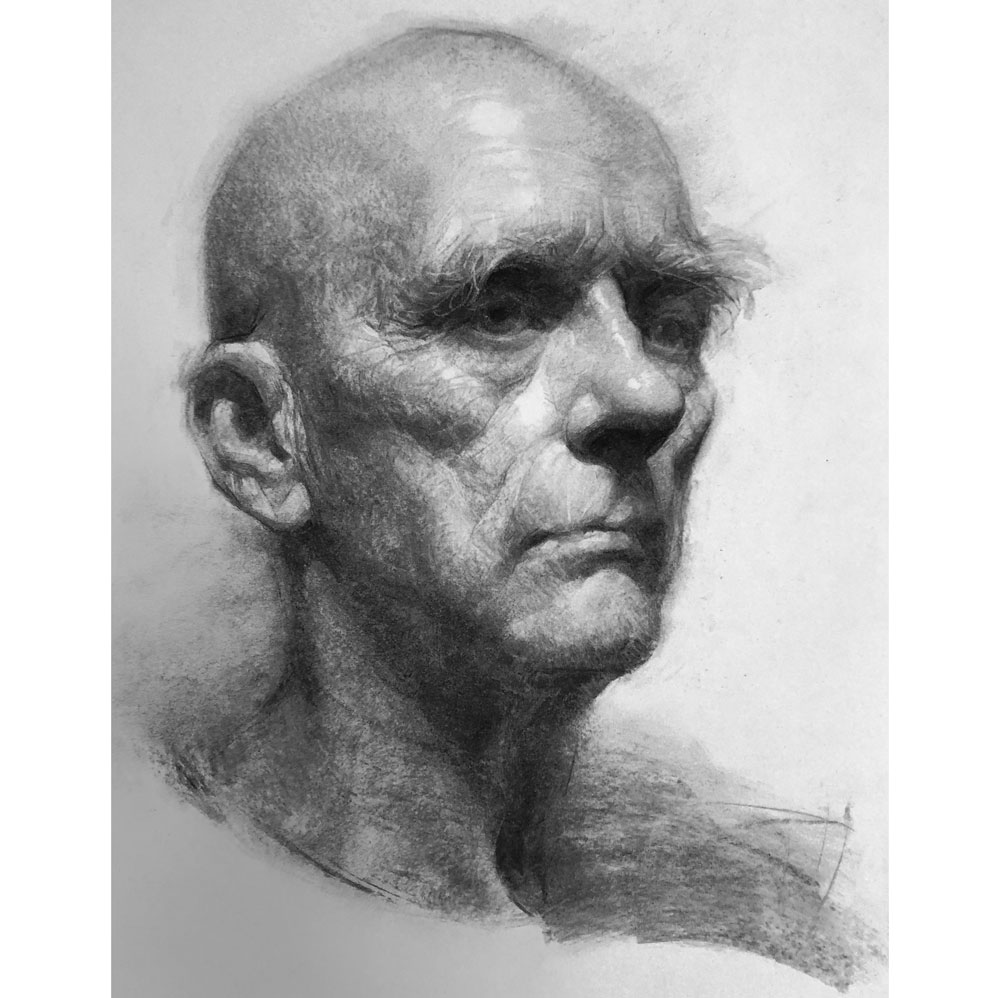
In each area where you work on details, reexamine the shapes of the different parts, paying attention to the strokes so that there's variation in hard and soft edges. Wherever you add detail, shade the entire area first, then pull out highlights with an eraser and then use a charcoal pencil to emphasise the shadows.
Wrinkles can enrich the drawing with texture and details. Wrinkles shouldn't stand out and must correspond to the shapes of the facial features. Focus on conveying an impression of wrinkles, rather than drawing all of them.
Finish by reexamining the light, mid-tone and dark values, as well as the edges of the face. Each of the three major values should be further rendered into three more values, together with the highlight, for a wide value range that captures the forms. The edges of the face shouldn't form one continuous line, but instead contain rhythm, spatial relationships and variation.
Reinforce the boundary between light and dark on the chin to solidify this facial feature and softly represent the structure and texture. Finally, reinforce the dark areas even more by adding willow charcoal with vine charcoal.
12. Express mood with the hands
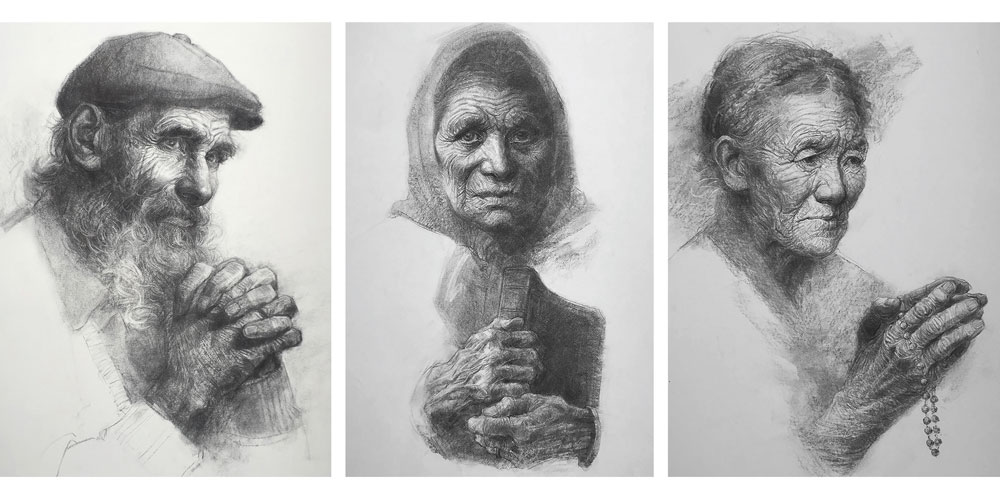
Hands add emotion and feeling to a drawing. Including the hands can turn a regular portrait into a character study: a candid, unposed approach that reveals the subject's personality. On a philosophical level, hands represent the way we touch and feel objects, or even other people – how we ‘connect’ with the outside world.
13. Consider a texture background

The texture background can play a key role in the visual statement of a drawing. A background can give an artwork a soft, calm look, or liven a piece with an energetic striking approach. Incorporating a creative background in your art shouldn't take the focus away from the subject.
Concentrate on the lights and darks of the subject when selecting a background treatment. If the subject is light on one side, a dark tone behind will show the contours more clearly. Use the background to show off the contrast and enhance your work, not compete with it. There's no formula for achieving the right background, so be creative!
14. Create facial hair
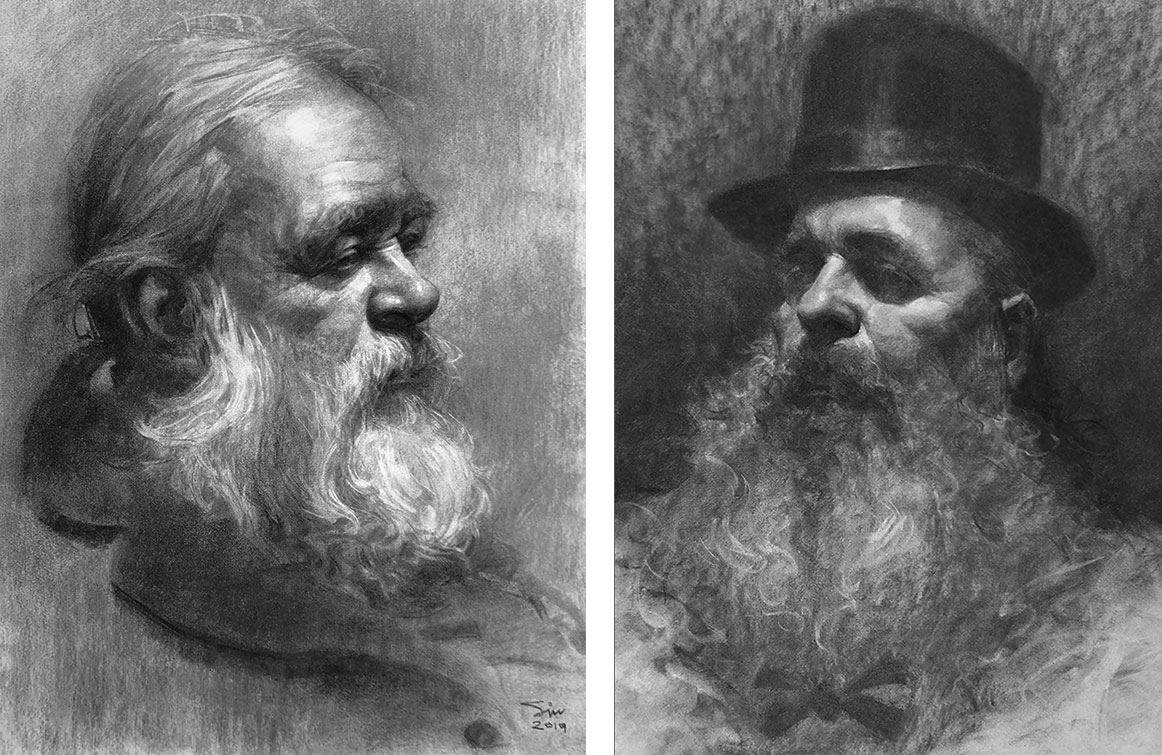
Every moustache or beard is different, but there are several key things to look for. The nose casts a shadow on the moustache, and the moustache casts a shadow on the mouth. If the moustache is very full, it may cover the upper lip. Think of the moustache as a large upper lip that wraps around the mouth, producing larger shadows. Follow the light and shadow on the head if the planes aren't visible in the facial hair.
Pay attention to the beard's shape, and train your eye to see that hair has no definable edge, like smoke. Rather than drawing individual hairs, treat the beard as a mass of light and shadow, keeping the edges soft.
15. Use edges to convey form

When an artist mixes soft and hard lines, or edges, in the right places, it sets up a path for the viewer's eyes, creating the illusion of three dimensions on a two-dimensional surface. When edges are soft, an element can seem to recede.
You can further blend a subject into the background by making its lines soft. A soft- edged drawing creates a fuzzy, dreamy effect, whereas a drawing with too many hard edges will look unnatural, creating visual tension because too many areas are competing. This will confuse viewers because there's nowhere for their eyes to rest. I don't mean you should never use hard edges, but you should use them sparingly for emphasis, keeping lines hard at your focal point.
In my portrait drawings, I generally use a proportion of roughly 85 per cent soft lines and 15 per cent hard lines. If you understand and master the power of controlling edges in your drawings, you'll be amazed at how much your portraits will improve.
The second page of content was originally published in issue 183 of ImagineFX, the world's best-selling magazine for digital artists. Buy issue 183 or subscribe to ImagineFX.
Read more:
- Draw on the power of contrast in art
- The best art easels in 2020
- Art terms: The ultimate artist's glossary
Get the Creative Bloq Newsletter
Daily design news, reviews, how-tos and more, as picked by the editors.

Thank you for reading 5 articles this month* Join now for unlimited access
Enjoy your first month for just £1 / $1 / €1
*Read 5 free articles per month without a subscription

Join now for unlimited access
Try first month for just £1 / $1 / €1
- 1
- 2
Current page: 15 tips for drawing heads realistically
Prev Page How to draw a head from different angles